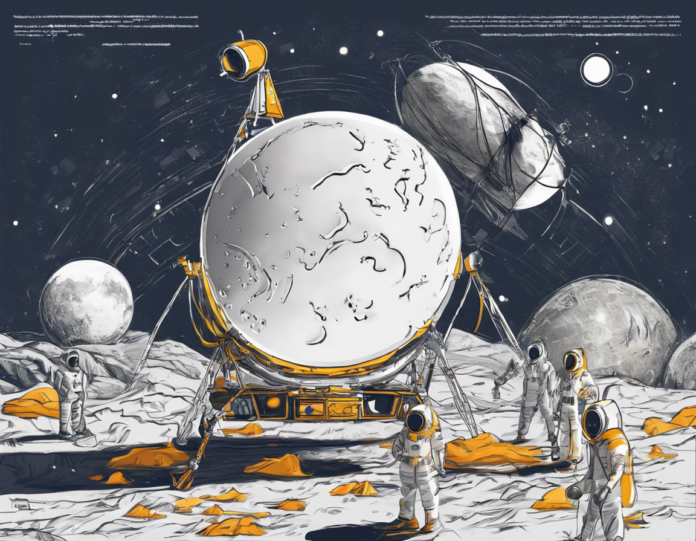India’s space exploration program has been making remarkable strides with its Chandrayaan missions, and the upcoming Chandrayaan 3 mission promises to further advance the nation’s capabilities in lunar exploration. After the success of Chandrayaan 1 and Chandrayaan 2, the Indian Space Research Organisation (ISRO) is gearing up for another spectacular mission to the Moon. Let’s delve into the exciting journey towards Chandrayaan 3 and explore what the future holds for India’s lunar exploration endeavors.
Chandrayaan Missions: A Brief Overview
Before delving into Chandrayaan 3, it’s essential to look back at the previous missions that laid the foundation for India’s lunar exploration program. Chandrayaan 1, launched in 2008, was India’s first mission to the Moon. It made significant discoveries, including the presence of water molecules on the lunar surface.
Building on the success of Chandrayaan 1, ISRO launched Chandrayaan 2 in 2019. This ambitious mission aimed to explore the Moon’s south pole region, a target that had never been attempted before. While the Vikram lander faced challenges during its descent, the orbiter continues to send valuable data about the Moon’s surface and exosphere.
Chandrayaan 3: The Next Chapter
Chandrayaan 3 represents the next chapter in India’s lunar exploration journey. The mission aims to demonstrate ISRO’s capabilities in soft landing on the lunar surface, a feat that was not entirely successful in Chandrayaan 2. By learning from past experiences and leveraging technological advancements, ISRO is poised to achieve a successful landing with Chandrayaan 3.
Key Objectives of Chandrayaan 3
The primary objectives of Chandrayaan 3 include:
– Soft Landing: Chandrayaan 3 aims to achieve a successful soft landing on the lunar surface, showcasing India’s technological prowess.
– Scientific Exploration: The mission will conduct scientific experiments to gather data and enhance our understanding of the Moon’s geology and exosphere.
– Technology Demonstration: Chandrayaan 3 will test new technologies and capabilities that will pave the way for future lunar missions.
Technical Improvements in Chandrayaan 3
ISRO has incorporated several technical improvements in Chandrayaan 3 to enhance its chances of success. Some key enhancements include:
– Redesigned Lander: The lander for Chandrayaan 3 has been redesigned to address the shortcomings of the Vikram lander from Chandrayaan 2.
– Enhanced Navigation Systems: Improved navigation systems will enable more precise landing and reduce the risk of errors during descent.
– Robust Communication Systems: Chandrayaan 3 will feature enhanced communication systems to ensure seamless connectivity with mission control.
Collaboration and Global Partnerships
ISRO has been actively collaborating with international partners to enhance its capabilities in space exploration. Collaborations with agencies like NASA and ESA have been instrumental in sharing resources, expertise, and knowledge. Such partnerships not only benefit India’s space program but also foster international cooperation in exploring the mysteries of space.
Future Prospects for India’s Space Program
Chandrayaan 3 signifies India’s continued commitment to pushing the boundaries of space exploration. As the nation aims for more ambitious missions, such as crewed space flights and Mars exploration, the future of India’s space program appears bright and promising. With a talented team of scientists, engineers, and technologists driving innovation, ISRO is on track to achieve remarkable feats in space exploration.
FAQs
1. What is the anticipated launch date for Chandrayaan 3?
The launch date for Chandrayaan 3 is expected to be in late 2022 or early 2023.
2. Will Chandrayaan 3 carry any rovers or landers for scientific exploration?
Chandrayaan 3 will primarily focus on the successful soft landing of the lander on the lunar surface. Scientific payloads for data collection will be onboard the mission.
3. How will Chandrayaan 3 differ from its predecessor, Chandrayaan 2?
Chandrayaan 3 will feature a redesigned lander with enhancements in navigation and communication systems to improve the chances of a successful soft landing.
4. What are the major scientific objectives of Chandrayaan 3?
The scientific objectives of Chandrayaan 3 include conducting experiments to study the Moon’s geology, exosphere, and other lunar phenomena.
5. Will Chandrayaan 3 pave the way for future crewed lunar missions by India?
While Chandrayaan 3 focuses on robotic exploration, its success will undoubtedly contribute towards India’s aspirations for crewed lunar missions in the future.
In conclusion, Chandrayaan 3 represents a significant milestone in India’s space exploration journey. With a blend of innovation, determination, and international collaboration, ISRO is poised to achieve a successful soft landing on the Moon and unlock new frontiers in lunar exploration. The future holds exciting possibilities for India’s space program, and Chandrayaan 3 is just the beginning of a new era in lunar exploration.

